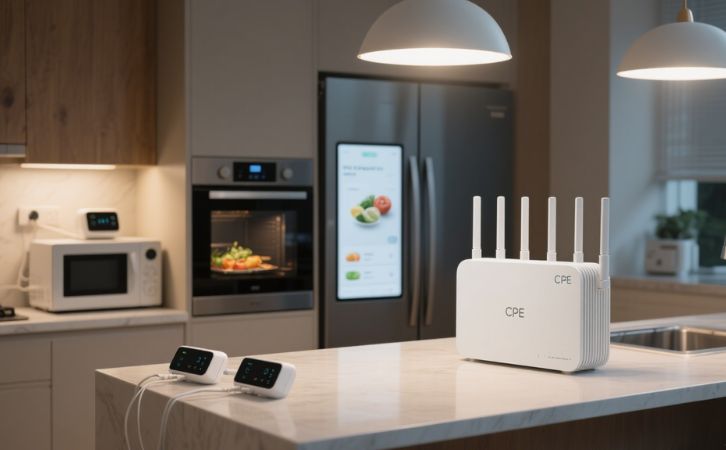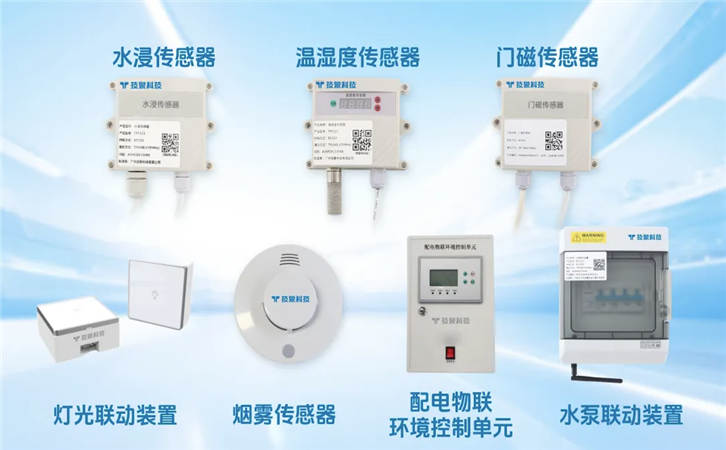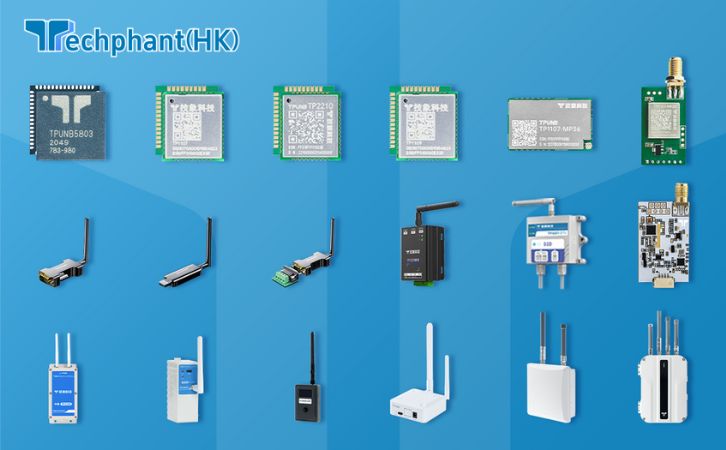The convergence of 5G and the Internet of Things (IoT) is transforming industries, enabling applications from smart cities to autonomous vehicles. At the heart of this transformation lies Customer Premises Equipment (CPE), which serves as the critical interface between end-user devices, IoT ecosystems, and high-speed 5G networks. CPE, such as 5G routers and gateways, bridges local IoT devices with 5G infrastructure, ensuring low-latency, high-bandwidth, and reliable connectivity. As 5G adoption accelerates, CPE plays a pivotal role in unlocking the full potential of IoT by supporting diverse protocols, edge computing, and robust security. This article examines how CPE enables 5G and IoT connectivity, delving into its technical foundations, applications, challenges, and future trends.
I. Technical Foundations of CPE in 5G and IoT
CPE in 5G networks, typically in the form of routers, gateways, or fixed wireless access (FWA) devices, is designed to leverage 5G’s advanced capabilities, including enhanced Mobile Broadband (eMBB), Ultra-Reliable Low-Latency Communications (URLLC), and Massive Machine-Type Communications (mMTC). These devices support 5G’s sub-6 GHz and millimeter-wave (mmWave) bands, delivering data rates up to 10 Gbps and latency as low as 1 ms. For IoT, CPE integrates multiple protocols—such as Wi-Fi 6, Zigbee, LoRaWAN, and MQTT—to connect heterogeneous devices like sensors, cameras, and smart appliances to 5G networks.
A typical 5G CPE includes advanced hardware, such as multi-band antennas, high-performance chipsets (e.g., Qualcomm Snapdragon X65), and software-defined networking (SDN) capabilities for dynamic traffic management. For example, a 5G FWA CPE in a smart home might use sub-6 GHz for wide coverage and mmWave for high-speed indoor connectivity, while aggregating data from Zigbee-based sensors for cloud transmission via MQTT. Edge computing is a key feature, enabling local data processing to reduce latency and cloud dependency. For instance, a CPE might analyze video feeds from IoT cameras locally before sending alerts over 5G, optimizing bandwidth. Security features like WPA3, TLS, and secure boot are critical to protect IoT data traversing 5G networks.
II. Applications of 5G CPE in IoT Ecosystems
CPE is instrumental in enabling a wide range of IoT applications by providing seamless 5G connectivity. In smart homes, 5G CPE supports bandwidth-intensive applications like 4K video streaming from security cameras and low-latency control of smart appliances. For example, a 5G router might connect a smart thermostat and door lock via Wi-Fi 6, while relaying data to a cloud platform like AWS IoT Core over 5G for remote monitoring. In smart cities, CPE powers applications like intelligent traffic systems, where it aggregates data from IoT sensors monitoring traffic flow and transmits it to a central server with URLLC for real-time signal optimization.
Industrial IoT (IIoT) benefits significantly from 5G CPE, particularly in private 5G networks. In a factory, a 5G gateway might connect PLCs and sensors via MQTT, enabling real-time monitoring of machinery with mMTC supporting thousands of devices. Autonomous vehicles also rely on CPE for vehicle-to-everything (V2X) communication, where roadside units act as CPE to relay data over 5G with ultra-low latency. Fixed wireless access is another key application, providing high-speed internet to rural areas, where CPE connects IoT devices like agricultural sensors to 5G networks, enabling precision farming. These applications highlight CPE’s role in bridging local IoT networks with 5G’s global reach.
III. Challenges in Deploying 5G CPE for IoT
Despite its potential, deploying 5G CPE for IoT faces several challenges. Cost is a significant barrier, as 5G CPE devices with multi-band support and advanced chipsets are expensive, limiting adoption in cost-sensitive markets like small businesses or rural areas. For instance, a high-end 5G FWA CPE with mmWave support can cost several hundred dollars, compared to sub-$100 Wi-Fi routers. Power consumption is another issue; while 5G CPE is typically mains-powered, supporting low-power IoT protocols like LoRaWAN or NB-IoT requires efficient radio management to avoid draining connected device batteries.
Interoperability poses a challenge in heterogeneous IoT ecosystems, where devices use different protocols (e.g., Zigbee, CoAP) and manufacturers follow proprietary standards. Emerging standards like Matter aim to address this, but integration remains complex. Security is critical, as CPE is a prime target for cyberattacks due to its central role. Vulnerabilities in firmware or misconfigured 5G connections can expose IoT networks, necessitating robust measures like OTA updates and DTLS for CoAP. Finally, 5G coverage remains limited in some regions as of 2025, particularly for mmWave, which requires dense base station deployments, complicating CPE performance in rural or underserved areas.
IV. Future Trends and Innovations in 5G CPE for IoT
The future of 5G CPE in IoT is shaped by emerging technologies and standards. Software-defined CPE, leveraging SDN and network function virtualization (NFV), enables dynamic configuration to optimize traffic for diverse IoT applications. For example, a CPE might prioritize URLLC traffic for industrial sensors while allocating eMBB bandwidth for video streaming. AI-driven network management is another trend, with CPE using machine learning to predict traffic patterns and optimize resource allocation, enhancing efficiency in smart homes or factories.
The adoption of Wi-Fi 6E and 6G (expected by 2030) will further enhance CPE capabilities. Wi-Fi 6E’s 6 GHz band reduces congestion, supporting more IoT devices, while 6G promises AI-native networking and terahertz frequencies for unprecedented data rates. Open RAN (Radio Access Network) integration allows CPE to work with interoperable 5G infrastructure, reducing costs and vendor lock-in. Additionally, advancements in low-power chipsets and energy harvesting (e.g., solar-powered CPE) could make 5G gateways more sustainable for remote IoT deployments, such as environmental monitoring. These innovations will solidify CPE’s role as a cornerstone of 5G-IoT integration.
Conclusion
Customer Premises Equipment is indispensable in enabling 5G and IoT connectivity, acting as the bridge between local IoT devices and high-speed 5G networks. By supporting advanced 5G features like eMBB, URLLC, and mMTC, alongside protocols like MQTT and Wi-Fi 6, CPE powers applications from smart homes to industrial automation and smart cities. However, challenges like cost, interoperability, security, and limited 5G coverage require ongoing innovation in hardware, software, and network design. As technologies like SDN, AI, and 6G mature, CPE will evolve to deliver greater efficiency, scalability, and sustainability, driving the next wave of IoT innovation and solidifying its role in the connected future.



